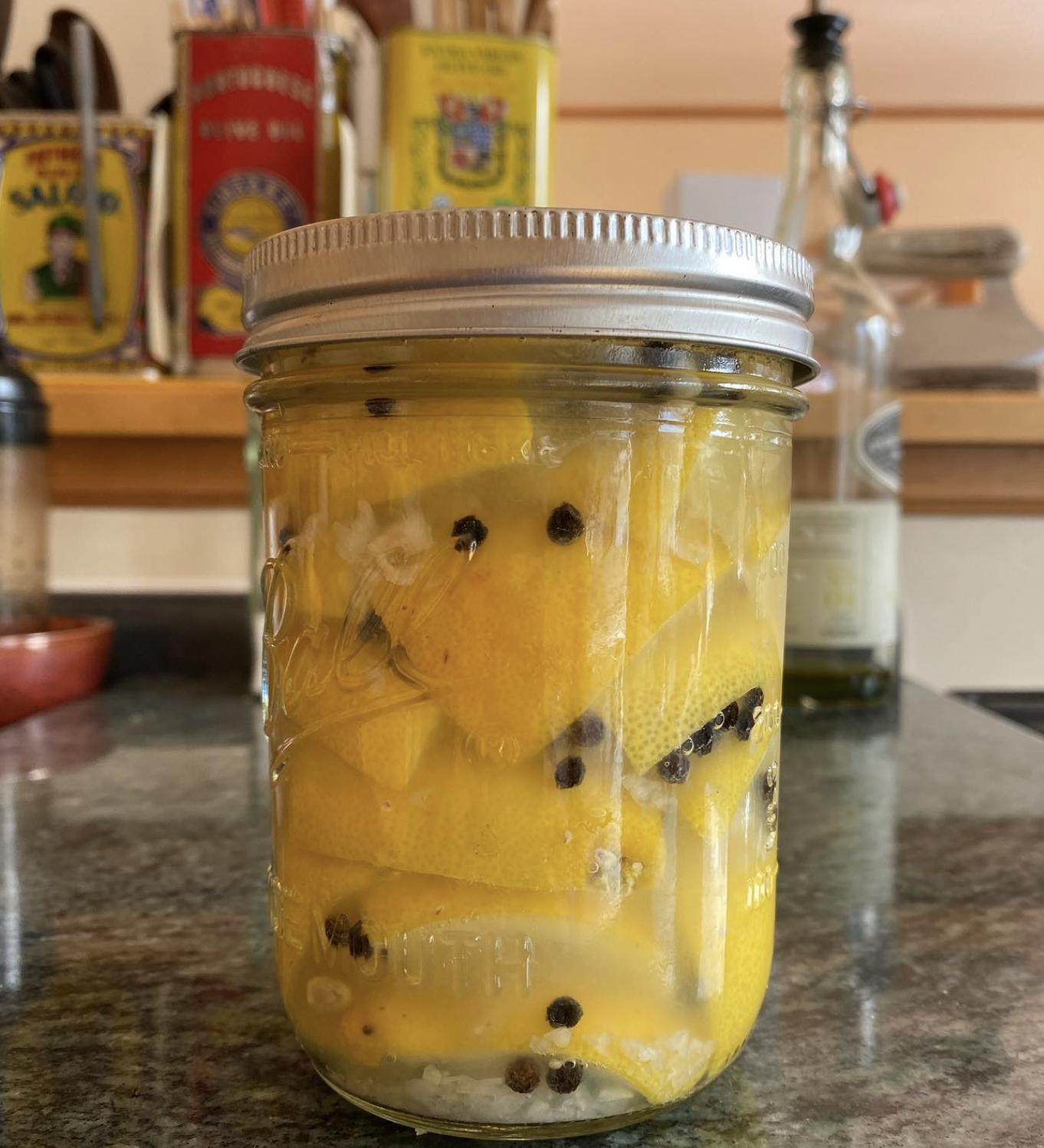A tajine just wouldn’t be a tajine without the signature flavor of preserved lemons. The tang and bite of this lovely fermented citrus perks up a lentil soup, and brings fabulous bright notes to a salad dressing, a sauce for earthy root vegetables, or add some olive oil and whiz it up with with a hand blender as a drizzle for fish… anywhere you want a lemonysaltyfunky zing. And it’s ridiculously easy to make. You could also use limes for a more South Asian approach to the ferment. Ensure you are using organic fruit, because the rind is an important part of the ferment - no pesticides please. When you are ready to eat them, quickly remove the pulp, rinse the rind and chop it up into whatever recipe you are using. The flavor will be retained the best when added at the end of cooking.
Ingredients:
5-6 organic lemons, washed and dried, room temperature. Thinner skinned lemons are recommended, but you may not have much of a choice - it shouldn’t matter too much.
Optional spices; whole black peppercorns, crushed red pepper, cinnamon stick, cloves, bay leaf, coriander seeds
salt, coarse or fine
Materials:
a small (pint) mason jar with a lid
cutting board, sharp knife
Technique:
Cut 4 of the lemons in half equatorially, then quarter the halves almost all the way through. Try to extricate all the seeds without losing the juice (I do this over the jar).
Put a layer of salt at the bottom of the jar and scatter some peppercorns and any other spices on top. Smash a quartered half-lemon on top expelling as much juice as possible. Repeat with another half lemon. Add more salt, spices and another 2 lemon-halves. Continue, pushing the fruit under the expressed juice until you reach close to the top of the jar. Ideally, you’ll want an inch of head room at the top. Smash it all down firmly, but if the fruit is not covered, juice a remaining lemon and pour the juice on top.
Close the jar with a lid and put it in a room temperature cupboard out of the light. The next day, smash it all down under the liquid again. Repeat for a week or two until it stays under the liquid and happily ferments. It can stay at room temperature for a month up to a year, but once you are happy with the flavor, you can put it in the fridge to slow it down.
This version is a variation from Alex Lewin’s book Real Food Fermentation. Here’s another version of the recipe.

